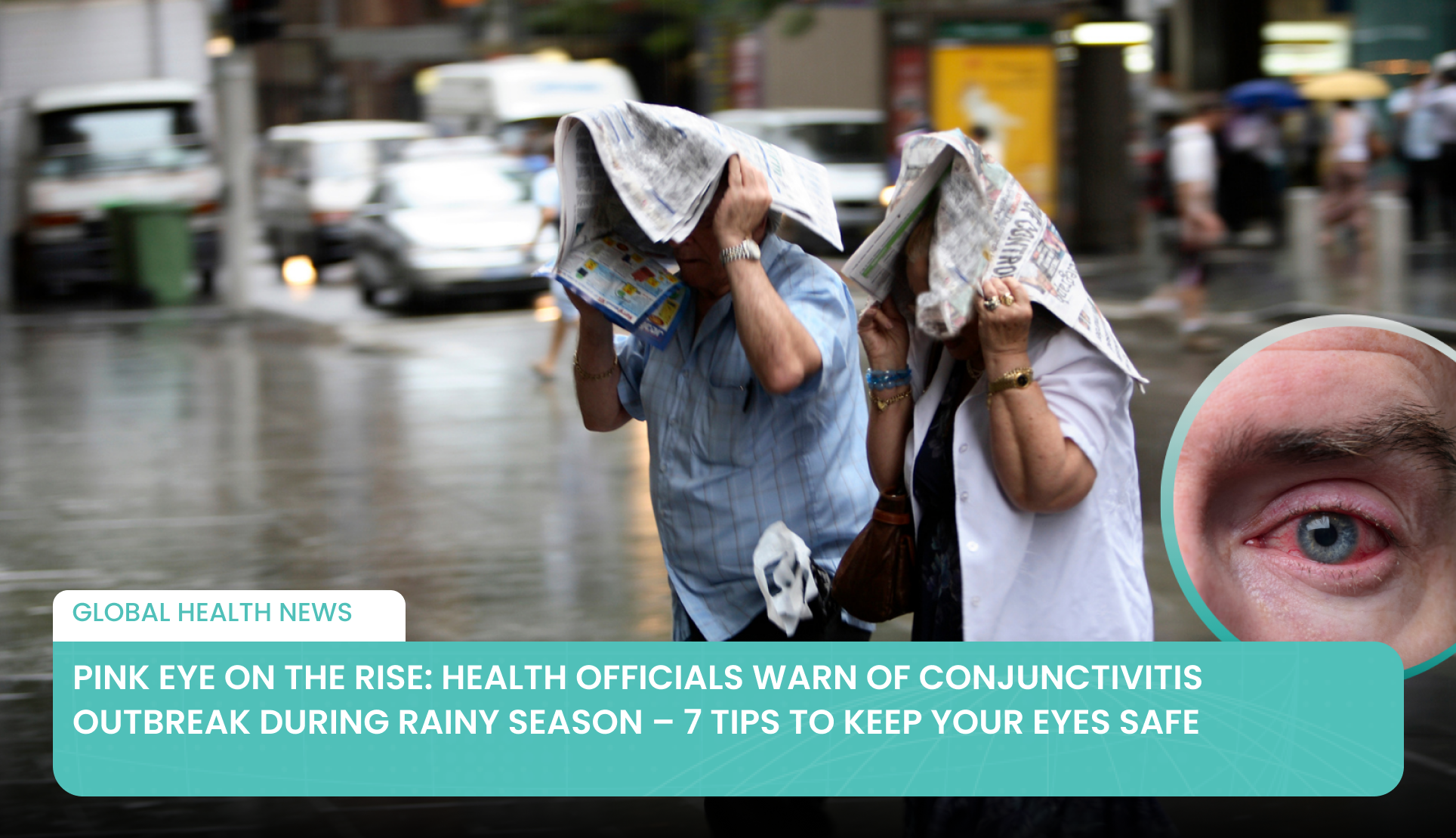
Pink Eye on the Rise: Health Officials Warn of Conjunctivitis Outbreak During Rainy Season – 7 Tips to Keep Your Eyes Safe
The Department of Medical Services is warning the public to take extra care of their eyes during the rainy season, when high humidity and fluctuating weather conditions allow bacteria and viruses to spread more easily. One of the most common illnesses at this time of year is conjunctivitis, or “pink eye”, which can be caused by bacterial, viral, or allergic infections and spreads rapidly among both children and adults. Anyone experiencing abnormal eye redness should seek medical attention promptly.
The Department of Medical Services is warning the public to take extra care of their eyes during the rainy season, when high humidity and fluctuating weather conditions allow bacteria and viruses to spread more easily. One of the most common illnesses at this time of year is conjunctivitis, or “pink eye”, which can be caused by bacterial, viral, or allergic infections and spreads rapidly among both children and adults. Anyone experiencing abnormal eye redness should seek medical attention promptly.
During the rainy season, the body’s immune system can weaken due to temperature changes and moisture, making people more vulnerable to infections. Maintaining good overall health — including eating a balanced diet with plenty of fruits and vegetables — helps strengthen immunity and reduce the risk of seasonal diseases.
The rainy season also brings a higher risk of eye infections. Contaminated rainwater can wash dust and pathogens from rooftops, fences, and roads into the eyes. Floodwater may contain bacteria or viruses, which can quickly cause infection when they come into contact with the eyes. In severe cases, symptoms may include inflammation, irritation, blurred vision, and significant discomfort.
Eye specialists note that conjunctivitis symptoms typically appear 1–3 days after exposure and can remain contagious for up to 14 days. Common signs include redness in the whites of the eyes, irritation, burning, watery discharge, and excessive mucus.
- Viral conjunctivitis may cause swollen eyelids, watery eyes, swollen lymph nodes near the ears, sore throat, cough, and sensitivity to light.
- Bacterial conjunctivitis often leads to yellow or green discharge, watery eyes, blurred vision, and sticky eyelids.
- Allergic conjunctivitis usually causes itchy, watery, and burning eyes.
7 Eye Care Tips to Prevent “Pink Eye” During the Rainy Season:
1. Avoid close contact with infected individuals.
2. Do not share personal items such as towels, pillowcases, or handkerchiefs.
3. Protect your eyes from dust, dirty water, and rain splashes.
4. Avoid swimming in public pools during outbreaks.
5. Wash your hands frequently and avoid touching your eyes.
6. Wear sunglasses or protective glasses to shield against dust, wind, and debris.
7. Rest and stay home if infected to prevent spreading the disease.
Those with eye redness or discomfort should consult an ophthalmologist for proper diagnosis and treatment. Artificial tears may be used to relieve irritation, but early medical care remains the best way to protect your vision and stop the spread of infection.
Source:
Articles in this category are written by our editorial team to keep you informed about the latest healthcare and medical tourism news.

